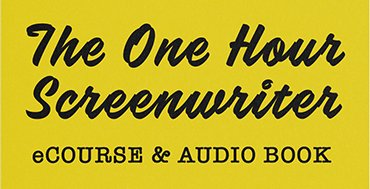Coming of Age – Power of Idealism
A British producer recently asked me why Billy Elliot and Bend It Like Beckham were such a hit with International audiences.
Both films use the Power of Idealism to fuel the conflicts at the core of their stories. These films, at their heart, are about the battle between:


■ Desire vs. Duty: Each protagonist wrestles with talent/passion and social responsibilities as a son or daughter of the family and a member of the story community. These protagonists are caught between what they love and whom they love.
■ Rebellion vs. Conformity: Each protagonist breaks barriers, by dancing/playing football, to rebel against the restrictions of the family or society. This very physical rebellion and release is the source of much of the fun in both movies. In contrast, each protagonist has a sibling who is much more willing to conform and who is implicitly or explicitly held out as a role model.
■ Longing vs. Contentment: Each protagonist desperately wants something outside of or beyond that which is offered in the confines of family and home. While others in the community are content to stay within established social boundaries, the protagonist dreams of being or doing something more unique.
These kinds of films are particularly powerful because of the underlying feeling of loss through-out. Loss is one of the emotions that resonates most deeply with audiences. The audience knows that the price of all new beginnings is the end of something else. Coming of Age or Power of Idealism films incorporate loss in several key respects:


■ The price of rebellion is loss of favor and acceptance by family and society. Rebels, by definition, anger and alienate those against whom they rebel. These protagonists are threatened with severe punishment, rejection and/or ridicule if they don’t conform. The protagonist persists in spite of the high potential cost.
■ The price of leaving is a loss of communal belonging. Once the protagonist fully asserts his or her individual identity and follows a unique passion or talent there is no going back. Although the family or community might eventually embrace or even celebrate the protagonist and his or her accomplishments; the protagonist has moved beyond and transcended the community. It is clear in the narrative that the protagonist will continue to move further and further from “home” to follow his or her dreams.
These emotional elements play out in a clear distinct cycle in each film. Although they are worlds apart externally, each protagonist has a similar psychological profile internally and undergoes a parallel emotional journey over the course of the films. This story cycle is the same in all Coming of Age or Power of Idealism films.
Such strong underlying patterns resonate very powerfully with audiences. When presented in a clearly focused narrative the audience responds deeply and eagerly desires to share the experience with others. This clarity, power and emotional response makes films like Billy Elliot and Bend It Like Beckham resounding international hits (regardless of culture, race or milieu in which the story is set).




Create a visual map for a character’s emotional journey. Pull stories from character rather from rote story structure beats. Some of the largest international media companies, use this in story and character development.


A clear concise guide for writers and producers to have by their side as they embark on a project. It gives a really vital reminder of what is key for story success.

No comment yet, add your voice below!